With PUI PUI Molcar creator MISATO Tomoki as a typical example, there is a growing trend for more and more creators who learned and produced animation in schools to demonstrate their individuality in commercial animation. The types of techniques of expression and creative approaches that these creators acquired during their time of academic learning would usually be used in contemporary art and music videos. How have those qualities come to be used in commercial animation? This article will delve into this matter with various examples, sometimes from a producers’ viewpoint.
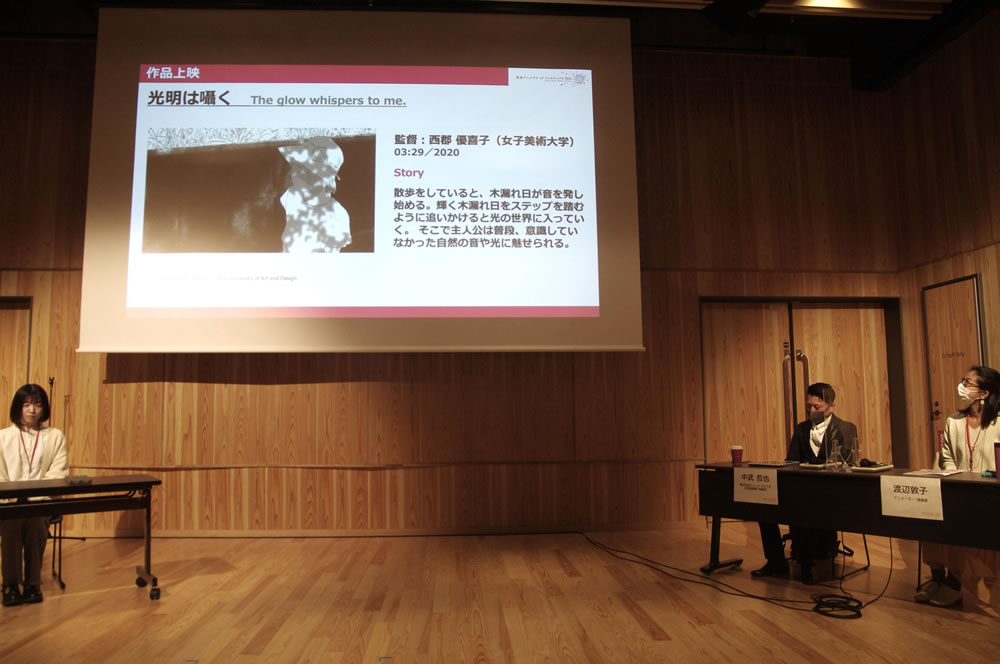 NAKATAKE Tetsuya (second from right) and animator WATANABE Atsuko (right) comment on a work of NISHIGORI Yukiko (left)
NAKATAKE Tetsuya (second from right) and animator WATANABE Atsuko (right) comment on a work of NISHIGORI Yukiko (left)
at “YOUNG POWER 2021” of the Tokyo Anime Award Festival 2021 (TAAF2021).
A new tide started by PUI PUI Molcar
A new tide has started, and it is already expanding. For the last 10 years or so, more and more young people who studied animation at art universities and/or graduate schools are entering the commercial animation world where many people see their works, which feature, for example, videos of moving paintings that have touches of those in picture books and frame-by-frame shooting of moving dolls, and creative use of felt-like wool materials. Typical examples are PUI PUI Molcar, a great hit directed by MISATO Tomoki and broadcast on TV from January 2021, and Poptepipic (Pop Team Epic) that was broadcast on TV from January 2018 and attracted attention to its experimental approach. The field involving that type of creativity is conventionally deemed to be relatively closer to contemporary art. How has it come to be so much sought after in the business world?
The Tokyo Anime Award Festival 2021 (TAAF2021) held in Ikebukuro, Tokyo, included a program called YOUNG POWER 2021 on March 15, 2021, to screen graduation and post-graduation works by students learning animation. At the event, NAKATAKE Tetsuya, co-founder and director of the animation production company WIT STUDIO, revealed that he was preparing to establish an in-house stop motion animation studio. WIT STUDIO was involved in animation series such as Shingeki no Kyojin (Attack on Titan) (broadcast: Season 1 in 2013, Season 2 in 2017, and Season 3 in 2018 and 2019) and GREAT PRETENDER (2020).
Although NAKATAKE did not go into specifics at the time, it was later announced that MISATO, who came to prominence with PUI PUI Molcar, would join the studio. That caused a sensation. MISATO completed the Department of Animation of the Graduate School of Film and New Media at Tokyo University of the Arts in 2017. His graduation work, My Little Goat (2018), had won awards at film festivals around the world, which won him a reputation as an animation artist of the next generation. What is his next work? Will he become a great creator who aims to win the grand prix at a major animation film festival, such as the Annecy or Ottawa festival? While people were thinking about those things about him, it was announced that his next project would be PUI PUI Molcar to be broadcast on Kinder TV, a TV program for children.
In fact, the move was not very surprising as there was a foreshadowing event that led to this project. It was Poptepipic, a TV anime adaptation by the Kamikaze Douga anime production company based on a manga by OKAWA Bkub. The TV anime is made up of short episodes. The voice actors playing the main characters, POPUKO and PIPIMI, are all changed in Part A and Part B of each episode. The unconventional direction for anime, along with other elements, was well-received by anime fans. The work also attracted the viewers to its expressions, achieved not only by the cel shading (called cel-look in Japan) but also the stop-motion animation depicting dancing characters formed with wool felt and the use of pixel art-like animation.
Employed for creating the animation using wool felt was UchuPeople, a unit formed by TOMA Kazushige and Onohana, both also completed the Department of Animation of the Graduate School of Film and New Media at Tokyo University of the Arts (hereinafter referred to as the Geidai Animation department), but earlier than MISATO. TOMA’s graduation work was Pamon (2014), for which he used stop-motion animation to move wool-felt characters. This taste was effectively used in Poptepipic. Onohana’s graduation work, Yodomi no Sawagi (Crazy Little Thing) (2014), won the Ofuji Noburo Award at the 69th Mainichi Film Awards. Onohana worked on storyboard and direction for Part B of Episode 20 Dasshutsu! Kedarake World (Escape the hairy world) of Kedama no Gonjiro (Gonjiro, a wool ball) (2019–2020), in which WIT STUDIO was involved.
The animation director of the ending of Kedama no Gonjiro was MISATO. This indicates that WIT STUDIO had already paid attention to and supported him before PUI PUI Molcar was released. The key person was YAMADA Kenta, a producer of the company. It is said that YAMADA had frequently visited screenings of works created by students to discover new talents and incorporate them into his company’s works. As a part of his efforts, when it was decided to add a supplement animation DVD to the eighth volume of Totsukuni no Shojo (The Girl from the Other Side: Siúil, a Rún), a manga by NAGABE published in Monthly Comic Garden manga magazine (serialized from 2015 to 2021), YAMADA employed KUBO Yutaro and MAIYA Satomi, both finished the Geidai Animation department.
KUBO studied animation at Tokyo Polytechnic University and then went on to study at the Geidai Animation department. His works, which feature complicated movements described by a series of hand-drawn pictures, remind me of creations by the legendary Canadian animator Ryan LARKIN. MAIYA also graduated from Tokyo Polytechnic University and then continued learning at the Geidai Animation department. Her graduation work, Shiroi Unabara (Missing you) (2015) has a gentle taste like a picture book. WIT STUDIO picked the two artists to create the short film DVD in which the two were allowed to exert the most of their respective individuality. WIT STUDIO is currently producing a feature-length version of Totsukuni no Shojo (The Girl from the Other Side: Siúil, a Rún), with including the two creators again in the staff.
In addition to these projects, the establishment of a stop-motion animation studio involving MISATO indicates that WIT STUDIO is serious in creating works that are different from conventional commercial animation. Considering that planning the studio had probably already started before PUI PUI Molcar became so popular, we can also see the company is earnest about this project. WIT STUDIO is a member of IG Port group, the same as Production I.G, which is known for its high-quality works such as Ghost in the Shell/Kokaku Kidotai (Ghost in the Shell) (1995) by OSHII Mamoru and JIN-ROH (The Wolf Brigade) (2000) by OKIURA Hiroyuki. Now, WIT STUDIO seems to be more positive about trying new, challenging things than Production I.G.
PUI PUI Molcar provided an opportunity that may start a wave of various challenging projects, in addition to the WIT STUDIO project. PUI PUI Molcar was an amazing, moving work in that adorable guinea pig characters are made of wool felt, a material that better matches the animal than many other materials, and that flamboyant actions, which are reminiscent of Hollywood action movies, by these characters were created through careful modeling and painstaking filming by taking as long as one month for producing each episode.
Onohana of UchuPeople joined the PUI PUI Molcar staff, engaging in storyboard creation for Episode 3 Neko Kyushutsu Daisakusen (Cat Rescuing Operation) and Episode 4 Musha Musha Osoji (Chewing Chewing Cleaning). These episodes especially highlight the lovely, kind characters of Molcars. SATO Kei, an artist who had learned at the Geidai Animation department, worked with MISATO as a storyboard artist and animator for Episode 8 Molmission (Mol mission), which became popular due to its spy movie-like action scenes. SATO’S graduation work, A Pawn (2019), is a stop-motion animation depicting soldiers made of wood pieces shooting each other on a battlefield littered with wood pieces.
Japanese animation fans have been more and more feeling close to stop-motion animation through foreign animation works such as the Pingu series and the Shaun the Sheep series, and Japanese works created by dwarf, a studio led by GODA Tsuneo, such as the Komaneko series and the Rilakkuma to Kaoru-san (Rilakkuma and Kaoru) (2019). In recent years, the genre of stop-motion animation has been led by works by the Laika studio, including Henry SELICK’s Coraline (Japan title: Coraline to Button no Majo) (2009), which MISATO says is very enchanting for him, and Travis KNIGHT’s Kubo and the Two Strings (Japan title: KUBO/Nihon no Gen no Himitsu) (2016) having a Japanese theme.
Nevertheless, it is a new trend that a creator who just left the world of student animation creates a great hit, like PUI PUI Molcar, whose theme and visuals are received well by various age groups.
KUNO Yoko’s creativity
One of the pioneers of this trend is KUNO Yoko, who worked on IWAI Shunji’s Hana to Alice Satsujin Jiken (The Case of Hana & Alice) (2015) as the director of rotoscoping animation (a method of tracing the movements of real actors to create animation). She is a creator known for her Airy Me (2013), which is her graduation work in 2013 at the Department of Graphic Design of Tama Art University. This work won the New Face Award in the Animation Division at the 17th Japan Media Arts Festival, and her manga AMAGI Yuiko no tsuno to ai (A Horn and Love of AMAGI Yuiko) (KADOKAWA, 2017) won the New Face Award in the Manga Division at the 21st Japan Media Arts Festival.
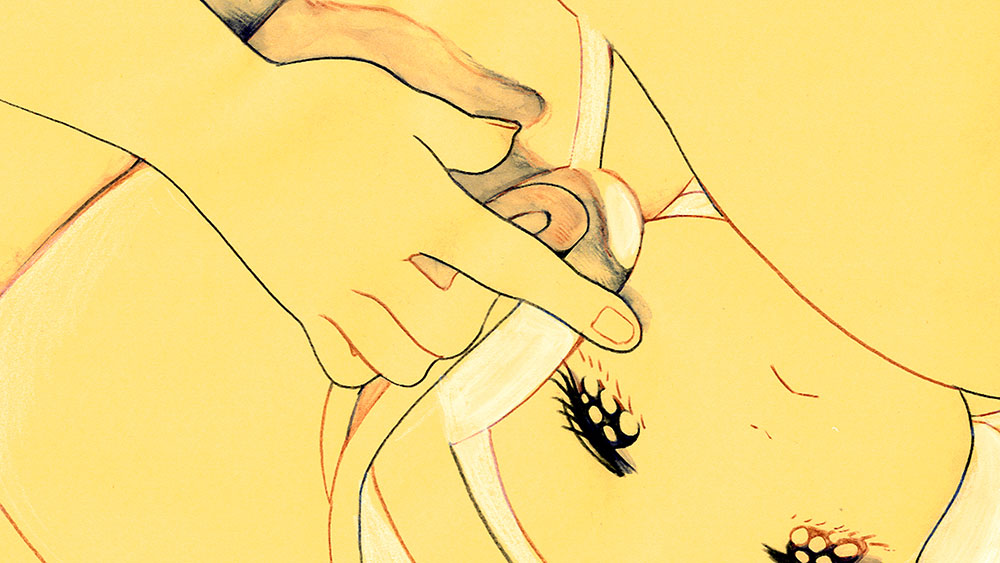
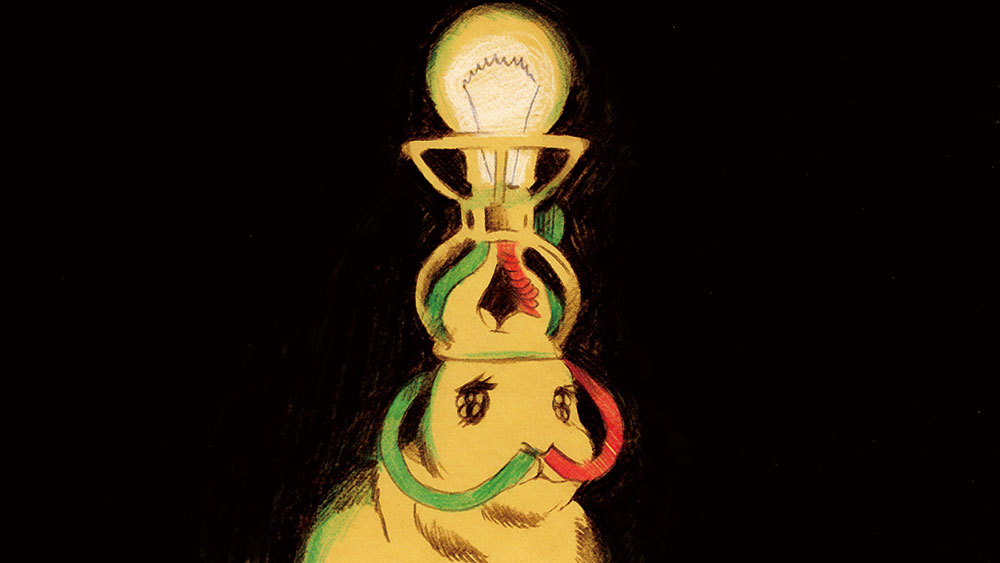 From Airy Me
From Airy Me
©2013 Kuno Yoko All Rights Reserved.
KUNO Yoko, Airy Me
In the beginning part of Airy Me, it feels like imitating commercial animation due to its characters having faces depicted similarly to conventional girls’ manga. But the viewers soon realize and are surprised that this work uses advanced animation techniques, such as camera work moving freely around a room and motifs undergoing metamorphosis. These elements make the viewers attentively watch depicted images.
I feel the creator may have intended to use a style rocking the border between commercial animation and art. When IWAI, who directed the live-action film Swallowtail (Swallowtail Butterfly) (1996), made Hana to Alice Satsujin Jiken (The Case of Hana & Alice) as a prequel to his live-action film Hana to Alice (Hana & Alice) (2004), he picked KUNO, who had just graduated from university, as a rotoscoping animation director in order to incorporate her talent for depicting and presenting movements.
Having her unique drawing style, KUBO is becoming more and more active in various fields, such as drawing the cover picture for the novel Alternate (Shinchosha, 2020) by KATO Shigeaki of the idol star group NEWS, and creating an advertisement animation film for the LUMINE shopping facility’s LUMINE Card 10% off Campaign. In addition, KUNO has engaged in many commercial animation projects. In the TV animation Hoseki no Kuni (Land of the Lustrous) (2017), based on the manga of the same title by ICHIKAWA Haruko, KUNO worked on the ending and the direction of Episode 11 Himitsu (Secrets).
KUNO was also involved in the TV animation BEASTARS (2019), based on the manga of the same title by ITAGAKI Paru. The manga won the Manga Taisho (Cartoon grand prize) 2018 and the New Face Award at the 21st Japan Media Arts Festival. KUNO worked Episode 7 Seifuku to Himo no Sonomata Shitano (Below the Fur Coat), engaging in the part depicting a dream that Haru the rabbit dreams. Her exquisite camera, metamorphosis depiction and flickering effect accent the work made with full 3DCG (three-dimensional computer graphics) cel shading.
The BEASTARS is a good example of incorporating a creator’s established individuality, without spoiling much of it, into commercial animation. This approach was also applied to creators who used to be active as student animators in university and were later employed for Poptepipic. The BEASTARS may be more progressive with respect to using such individuality in a series of works by allowing the creator to fully exert it by finding in advance where it is effective, rather than using it to give variations to a single work.
Former university animators now active in commercial animation
KINOSHITA Baku is another former student animator performing well, in directing the TV animation ODDTAXI (2021), a commercial animation broadcast from April to June 2021. This work features anthropomorphic animal characters, such as a walrus cab driver, which the protagonist, a gorilla doctor, an alpaca nurse, a toy poodle idol star and more. It is a mystery that evolves in the world where they live and gradually reveals the truth.
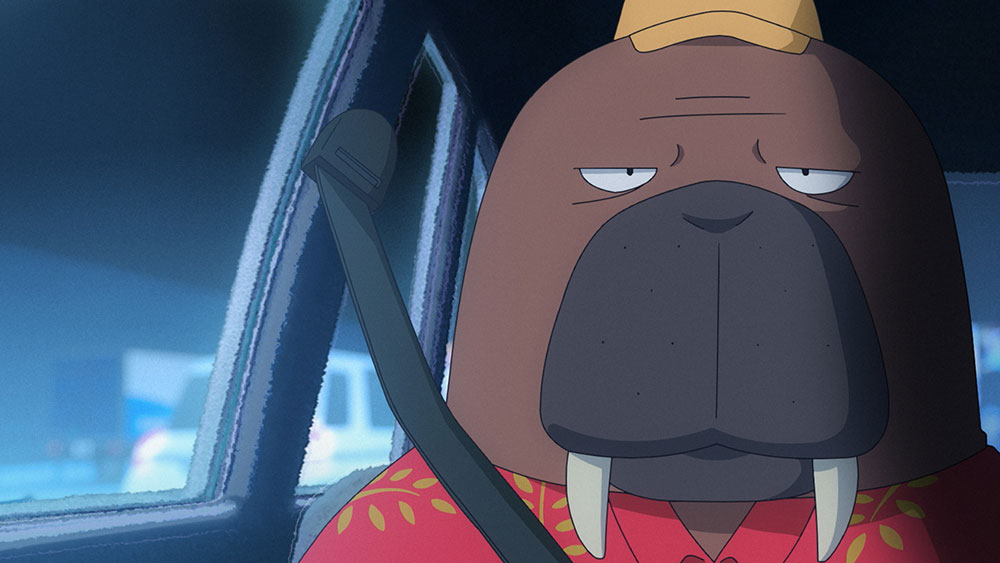 From ODDTAXI
From ODDTAXI
©P.I.C.S. / Odogawa Transport Partners
KINOSHITA graduated from Tama Art University in 2014 with his graduation work titled INDOOR. He then worked as an animator before making his directorial debut with ODDTAXI, a production by P.I.C.S. and OLM. He created a profound world with cute elements featuring a graphical depiction of an urban Tokyo, mixed with an intricate relationship among the characters, based on his experience of recreating a touch of American animation in 1950s in his graduation work.

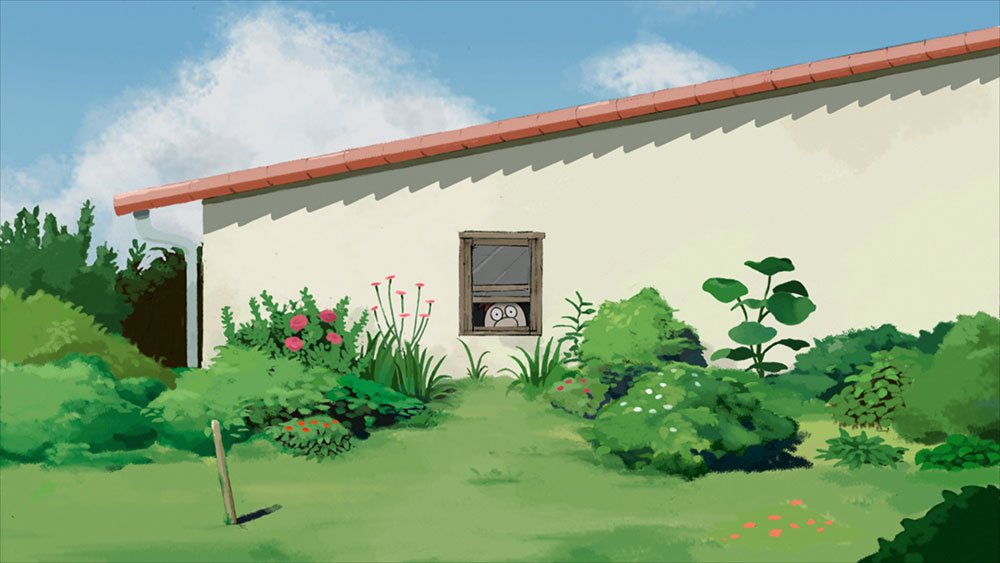 From INDOOR
From INDOOR
Then, let me mention the situations in other production studios. ISHITANI Megumi, who finished the Geidai Animation department, is active at Toei Animation, arguably the oldest and most established animation studio in Japan. ISHITANI directed a short anime, titled Jurassic! (2018), a project involving young workers from various different departments of the studio.
ISHITANI presented her talent in her graduation anime, titled Katasumi no Uroko (Scutes on my mind) (2015), for creating a fantastic world of a woman who looks back on her memory of a museum that collects dinosaur fossils and meets dinosaurs that transform into girls and start to move. She also demonstrated her superb drawing skills with a gentle touch. At Toei Animation, she has now great responsibility for directing ONE PIECE (1999–). In the process, she worked on Jurassic!, demonstrating her talent for depicting moving dinosaurs once again.
MATSUMI Wataru, who studied animation at the Department of Cinema of Nihon University College of Art, works for Toei Animation, where he was responsible for the first and second endings of Season 6 of GeGeGe no Kitaro (2018–2020) and was also involved in the series as an assistant director. In his graduation work, titled Watashi wa watashi (I am who I am) (2016), he depicted, in a gentle drawing style, a girl having a strong personality who thinks she is a normal person, while people around her do not see her that way, which makes her feel frustrated and lonely, but she eventually overcomes the feeling.
This work was created out of a graduation seminar provided by KATABUCHI Sunao, director of Kono Sekai no (Sarani Ikutsumono) Katasumi ni (In This Corner (and Other Corners) of the World) (2019). KATABUCHI himself is a graduate of the department, and has successfully played the role of training a young follower whose thematic works make the viewers feel something important.
ISHIDA Hiroyasu is a former student animator whose more commercially-oriented approach should be noted. When studying at the Animation Course at the Faculty of Manga of Kyoto Seika University, he produced Fumiko no Kokuhaku (Fumiko’s Confession) (2009), whose excellent depiction of actions made a strong impression even on ordinary animation fans. His graduation anime, rain town (2011), is very different from the work. It is a gentle and melancholic story about an interaction of a girl with a robot, set in a town where it is always raining. Fumiko no Kokuhaku (Fumiko’s Confession) won the Excellence Award in the Animation Division at the 14th Japan Media Arts Festival, and rain town received the New Face Award in the Animation Division at the 15th Japan Media Arts Festival.
From Fumiko no Kokuhaku (Fumiko’s Confession)
ISHIDA presented his versatility by releasing works one after another, such as Hinata no Aoshigure (The Sunshine of a Blue Autumn Shower) (2013) and Penguin Highway (2018), based on Studio Colorido, which was established after his graduation with his involvement. Having been steadily productive despite his young age, ISHIDA attracts attention as a talented creator following SHINKAI Makoto, along with YOSHIURA Yasuhiro. YOSHIURA started creating animation when studying at Kyushu Institute of Design (current Kyushu University). He founded Studio Ricca, directed Sakasama no Patema (Patema Inverted) (2013), and is preparing to release his latest work Ai no Utagoe wo Kikasete (Sing a Bit of Harmony) (2021).
ISHIDATE Namiko, who served animation director for Studio Colorido’s Penguin Highway, later went on to study at the Geidai Animation department and released her graduation animation, Watashi no Tochika (Our Little Pond) (2021) in the spring of 2021. In its story, a boy living in a dome on the ground puts on a diving suit and goes down in a well, where he finds a house and a girl living there. The boy follows a daily routine, including going to school in his diving suit, interacting with friends, coming back to deal with the girl’s selfish behavior, sleeping at night, waking up and going to school again in the morning.
When you talk to someone who you think being a friend, the person never think you are a friend. In order to give this sense of alienation and loneliness to the work, ISHIDATE picked SAWASHIRO Miyuki to provide the voice of the protagonist. During the production process, ISHIDATE had already determined that SAWASHIRO would the only choice. She was even prepared to provide the voice herself if SAWASHIRO would not be available. When she contacted SAWASHIRO’s agent office, SAWASHIRO said, “Of course, with pleasure,” and readily accepted her offer. I want to see how her uncompromising professionalism she exerted even when she was a student and the techniques and know-how of direction she learned at university will be presented after she returned to the animation production world.
Perspectives of producers and creators
There are many other creators who used to be student animators and are now active in the commercial animation field. With the success of PUI PUI Molcar, new talents may be looked for more seriously, but they may not always match the field. After SHINKAI made his debut with Hoshi no Koe (Voices of a Distant Star) (2002), there was a move to pay attention to independent creators, but it did not develop enough to be a major movement that would continue until today. In order to be able to release a work that shows the individuality of a creator as it is, it was necessary to have a producer, like WIT STUDIO, that gives the creator a boost.
Alternatively, there is a way to aim for being active in commercial animation, like ISHIZUKA Atsuko who directed Sora yori mo Toi Basho (A Place Further than the Universe) (2018). ISHIZUKA had already attracted attention as a talented anime creator when she was a student at Aichi University of the Arts. From the very beginning of her career, she aimed to work in commercial animation. She joined MADHOUSE, where she has been involved in many works until today.
NAKATAKE of WIT STUDIO, after watching works by students at the YOUNG POWER 2021 at TAAF2021, commented on Komyo wa Sasayaku (The glow whispers to me.) (2020) by NISHIGORI Yukiko of Joshibi University of Art and Design. NAKATAKE said to NISHIGORI: “I feel that when there is a moving story as a base, adding your video to the base will move [your creation] one step further. I feel [your creation] will evolve when it is combined with a project to visualize the happiness of everyday life.” NAKATAKE referred as an example to Kimi ni Todoke (From Me to You) (Season 1 in 2009–2010, Season 2 in 2011), which he worked on during his days with Production I.G and said, “Please do a work like Kimi ni Todoke.”
At the end of YOUNG POWER 2021, NAKATAKE said to the participants, “There is certainly an optimal future for each of you. Doing what you want to do is the most important and you should live a satisfactory life by doing it. If there is anything that you think we can do to meet your needs, please feel free to contact us.” Believing and jumping in a new world is one way to go. Sticking to the path you believe in and having it recognized by the public is also one way to go.
In either case, to create a better match and bring fertility to the next generation of anime, it is expected that producers are able to find the best way to use the sensibilities and skills of people who have studied animation, while creators need to have the self-production ability to recognize their own strengths and weaknesses and find the best way to go.











